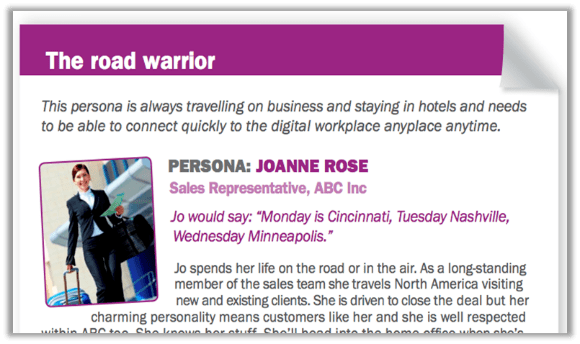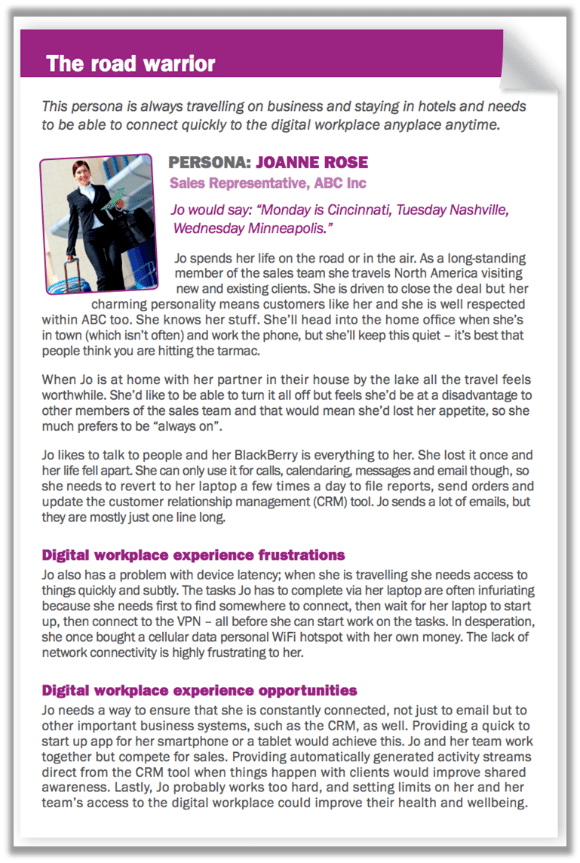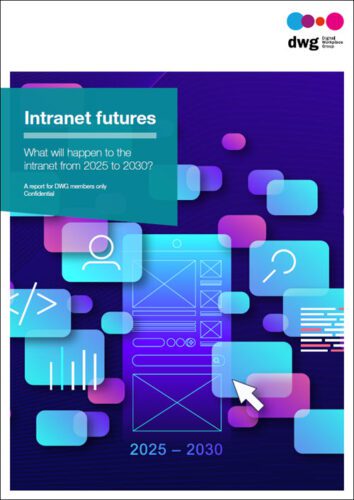Digital workplace projects: how to understand users through segmentation & personas

Synopsis: Not all your users are the same. User segmentation and related user personas for intranet and digital workplace projects will help you deliver targeted tools with clear business value for specific audiences.
Risks of assuming a one-size-fits-all user
Last time, I wrote about how scoping your digital workplace initiatives gives you “go-faster” stripes. This time I want to convince you that another way to accelerate your thinking is to segment your users into different groups.
We love defaults and the one-size-fits-all. It makes life so much easier. In times of yore it may have been fine to serve up the same thing to everybody and they could like it or lump it. Standard desktops, standard homepages, standard build. But someone needs to figure out what the standard is and, these days, if you get this wrong, dissatisfaction will breed not just discontent but risk as well, in various different guises:
▪ the risk that your colleagues can’t do the things they need to do
▪ the risk that they can’t use the provided technology to their advantage
▪ the ultimate risk that they’ll do something stupid to make up for the inadequacies of the “standard”.
What is user segmentation?
First off, let’s consider what we mean by segmentation. It simply means breaking down the target audience for something into different definable groups and understanding their characteristics. These groups might be based on job role, seniority or location.
For each segment you can gather together a selection of data, such as where everyone is located and what they do, as well as carry out user research into their attitudes and concerns. You can look for commonalities (Aha! Good for the standard!) or look for things that are specific and different. It is because of these exact differences that risky temptations may pop up for certain groups. If the senior manager doesn’t have time to boot up his laptop, he might longingly eye his iPad and conspire to heave all his files onto Dropbox. If the sales guy is ashamed to pull out his beaten-up old laptop running Windows XP in front of a prospective sales lead, he might resort to showing off that sleek new MacBook Air instead.
So, now you have a matrix of characteristics for different groups of users: a lookup table of what people do; how they do it; and how they feel about it in the digital workplace, alongside some nice data on which to base decisions: how many people; where they are; costs and importance.
You are halfway towards a framework for making better digital workplace decisions. But so far this only involves cold, hard data – as logical as Mr Spock. This is when we can start to employ personas.
User personas: your virtual panel of representative users
Personas are little pen portraits of fictional people. They can be as simple or elaborate as you like, but they stereotypically represent characteristics of the hard data. They have names and favourite things they like to do and, if you work in a big organization, you will know these people.
Personas are tools of empathy. They allow project teams to make judgments about the reality of their decisions, by, figuratively, having these fictional folk in the room with them when they make those decisions. “Would Jane like that?”; “Bob couldn’t be bothered to use that!”; “Gill would find that very useful”; “That would make Jack fume with rage.” (See ThoughtFarmer’s How-to guide for creating intranet user personas for actionable instructions.)
Here’s a persona I put together for the DWG research report Digital Workplace User Experience:

Joanne is clearly made up. If I were doing this for real, she would be a substantial synthesis of lots of user research and analysis. The series of personas of which Joanne is one element, clearly pivots about mobility and flexible working.
Personas are most valuable, I think, if they tie the personal from the user research to the strategic issues you are working with. If your strategy is about digital innovation, collaboration, mergers, or cultural or digital transformation, use that desired outcome as a hook to hang your personas on.
Personas are design tools that allow you to step away from your own preconceptions and what your boss might expect. They don’t replace testing with users, but they do allow the team to make better and more humane decisions. You can use the matrix of data about different groups who use the digital workplace, but temper this with the feelings and reactions of the people who are going to need to adopt the technological choices you are making on their behalf. Remember:
- If they don’t adopt the technology, you’ve wasted a lot of money.
- If they don’t adopt the technology, but decide to use something else, there is an exposure to risk.
- If they adopt the technology but hate it, you have bitten a chunk out of the organization’s collective employee engagement.
After all, you don’t really work with technology but with people – and people need to be understood. User research is an essential part of any digital workplace initiative, but do make sure this doesn’t become a dusty and forgotten document that happened at the beginning of the project. Turn it into a decision-making tool that’s there at every meeting. Make sure the user is always in the room.
Related research
Digital workplace user experience – designing for a flexible workforce
 The digital ecosystem of applications and systems provided to employees have usually been built-up piecemeal for a desk-bound user population.
The digital ecosystem of applications and systems provided to employees have usually been built-up piecemeal for a desk-bound user population.
The report suggests that organizations can tackle issues such as loss of productivity and reduced adoption of critical services by looking at the digital workplace through the lens of the user experience.
Categorised in: Digital workplace, Digital workplace strategy
